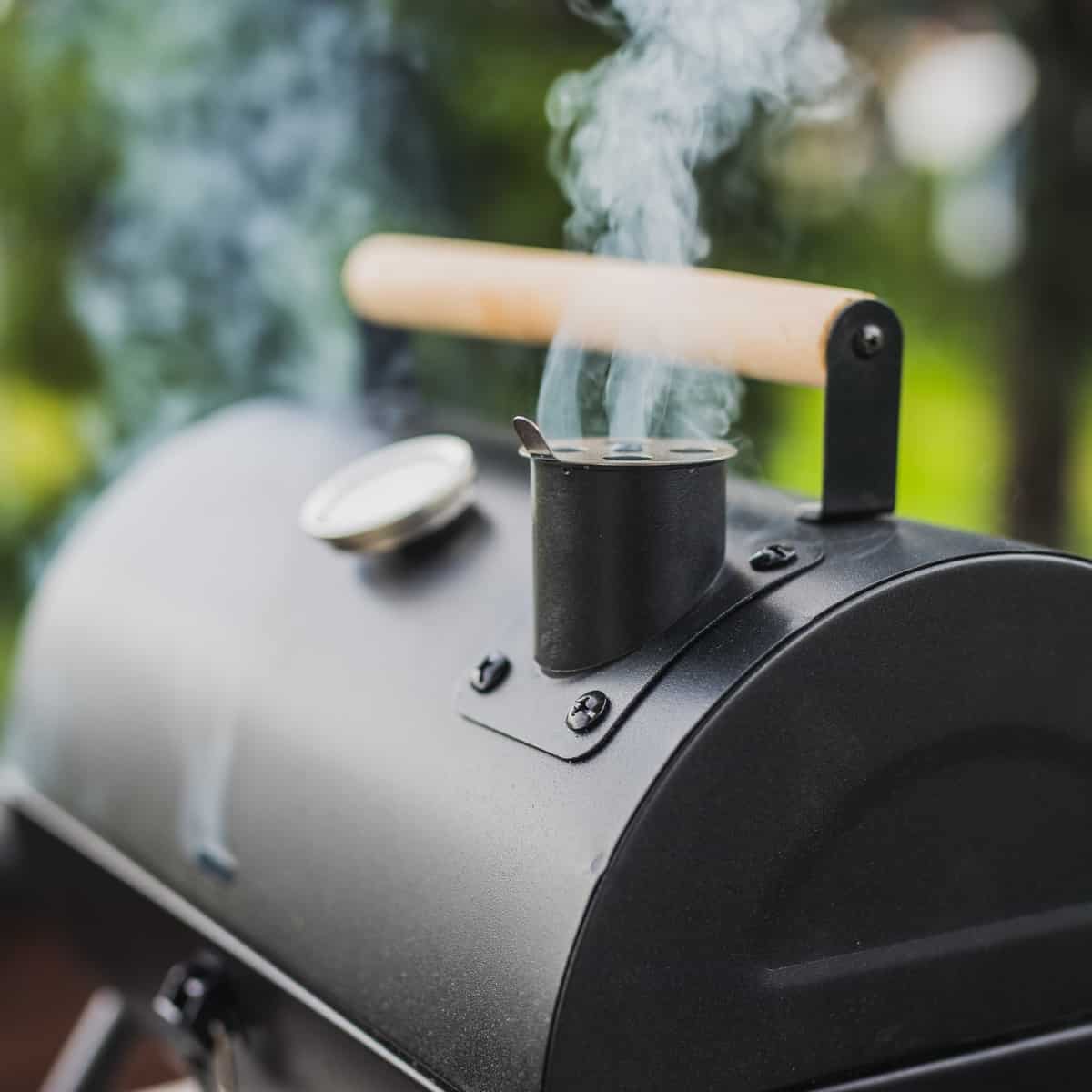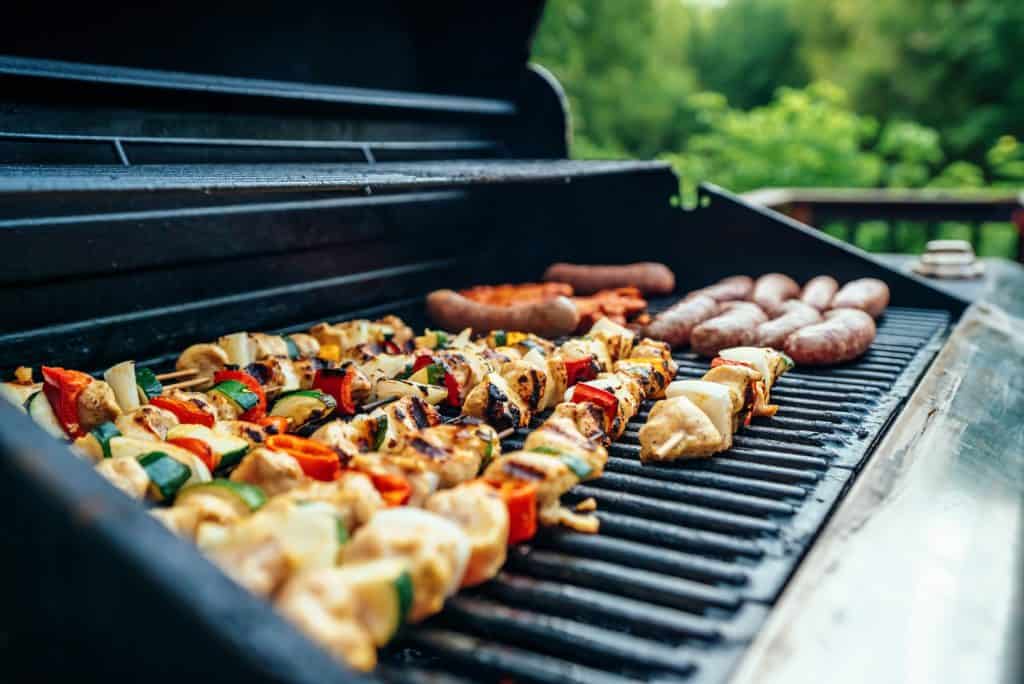You’ve probably heard about reverse flow smokers recently and started trying to figure out what the hype is all about.
In fact, there are a few differences when it comes to using a reverse flow smoker in comparison to your classic smoker.
Especially since they are often referred to as the superior alternative to a traditional offset smoker which can end up burning your food if you’re not savvy or careful.

In this post we'll cover:
- 1 What is a reverse flow smoker?
-
2 Why are reverse flow smokers popular?
- 2.1 Is a reverse flow smoker really better?
- 2.2 Reverse flow vs. offset smoker
- 2.3 What other features does the reverse flow smoker have?
- 2.4 What are the benefits or pros of a reverse flow smoker?
- 2.5 Are there any disadvantages to using a reverse flow smoker?
- 2.6 How do you use a reverse flow smoker?
What is a reverse flow smoker?
It is a barbecue smoker that is different from the offset smokers. The reason is that it forces air to go deep inside the smoker, which results in more uniform air temperature inside the smoker.
Here’s a basic rundown of how a reverse flow smoker works.
First, heat exits that part known as a firebox on the side and moves under a drip pan all the way to the far end of the smoker.
Next, it enters the smoking chamber and moves through to the cooking chamber part. At this point, the air moves in the opposite direction.
Finally, it exits from the stack area on the firebox side of the smoker.
This type of smoking device ensures a more even temperature distribution and airflow. Therefore, it is a good tool if you want flavorful smoked meats for your next family get together.
Like I mentioned above, these smokers have an extra plate underneath the cooking surface. Heat drafts from the firebox and into the cooking chamber then draw down under a baffled-flue to the end.
At that point, the flow reverses (which gave it its nickname) and then drafts back over the top of the heated baffle-flue.
Since they feature a thorough smoke flow and an even temperature distribution, they work great in creating perfectly smoked meat every time.
We’ll share our favorite one with you, but in the end, you can decide what’s best for you after we explain everything in detail.

Why are reverse flow smokers popular?
I kept running into issues with hot spots while barbecuing, and you might relate if you’re having the same issue.
Mastering the art of different temperatures across your grill isn’t for everyone, and it might cost you a lot of burnt meat. A common issue with classic smokers is that it takes trial and error to smoke the meat perfectly, every time.
Is a reverse flow smoker really better?
If you are a stickler for perfectly cooked meat every time, then yes, the reverse flow smoker is excellent.
It is better than your other smokers because it maintains an even temperature, which makes cooking easier. Therefore, it’s hard to burn food, and it ensures a great smoke each time.
Many pro smokers call Oklahoma Joe’s Longhorn Reverse Flow Smoker a superior alternative to most other smokers – both reverse and offset. Still not convinced? Keep reading below…
Reverse flow vs. offset smoker
Heat in offset smokers may vary across different spots on the grill which creates “hot spots” inside the chamber. This can be a big problem, especially if you’re not experienced, like me.
This is the biggest reason why I stayed away from them. However, some people prefer this since it gives them a chance to smoke some meats faster or slower depending on where they place them within the chamber.
On the other hand, reverse flow smokers have a steel plate inside the cooking chamber which lets heat pass underneath the grill at its highest temperature and then over it at a slightly lower temperature.
Reverse flow smokers allow heat to be evenly distributed across the cooking chamber of your BBQ smoker.
This protects the meat from intense heat while also directing it under and then back over the meat before exiting through the chimney.
This extra plate and the location of the chimney on these smokers means that smoke remains inside the pit for a longer period of time.
This feature makes it perfect for slowly smoking large meats. And yes, grilling using a reverse flow smoker usually takes longer since you don’t have those “hot spots”.
Those speed up the cooking in most cases, but with the reverse flow smoker, your meats will be smoked more evenly, producing better results.
Now in order to better understand what makes reverse flow smokers better, in my opinion, it’s useful to know what the design does or “how it works”.
What other features does the reverse flow smoker have?
The heated baffle or flue is designed as a water and grease tight griddle or pan. The cooking racks are then positioned on top of the of that griddle.
Remember that heat is used twice and this sears the fat on the welded griddle. And what do you get with this? Meat that is moist, tender, and full of flavor, without all the extra fat.
Apart from guiding the direction in which the smoke flows, the steel plate also helps by blocking the direct, harsh heat from overcooking the meat that is in close proximity to the firebox.
It also creates a more even cooking temperature since it acts as a heat sink and like we said earlier, it doubles as a grease and/or watertight pan.
But don’t just take my word for it, check out what other reviewers are saying. Some have even shared pictures of their deliciously smoked meats on this barbecue, so you can get a general idea.
What are the benefits or pros of a reverse flow smoker?
I have already pointed out multiple benefits that will make your barbecuing experience much easier. However, it’s always good to sum them up and point out the benefits.
- Even heat distribution across the chamber which reduces the need to turn the meat while cooking.
- This heat distribution makes it less prone to temperature spikes after adding more fuel to the fire, which leads to “hot spots”.
- More even smoke distribution, which thoroughly infuses your meat with a smoky flavor and taste.
- Temperature returns to cooking degrees quicker, after opening the chamber door.
- The fat renders out of the meat, sears on the griddle pan, and filters through the cooking chamber. So, you will experience improved moisture and flavor.
- No need to have an additional water and grease tray, since it’s already incorporated.
- A reverse flow smoker is easy to install and set up, it only takes a few minutes.
- The most important benefit is that it makes smoking your meat even easier. So if you want to save yourself from the hassle, or want to share your passion with others and show them your skills, it will also be easier for them to achieve delicious results. This means you’ll be surrounded by deliciously-smoked meat much more often.
Are there any disadvantages to using a reverse flow smoker?
In terms of the flavor and taste of the food, no there are no major disadvantages to using a reverse flow smoker.
On the other hand, a possible issue is that the steel plate of the smoker is welded in place in the smoke and food chamber. This makes it hard to clean so it can become full of debris and grease.
As well, you can experience something called a restricted airflow problem. This means that your food becomes over smoked, thus it tastes a bit bitter.
The main downside to a reverse flow smoker is that you can’t control the airflow, it moves in a set direction through the smoker.
How do you use a reverse flow smoker?
Before you begin to smoke your food, make sure to season and marinate your meat ahead of time.
Now, it’s time to light the charcoal in your smoker’s firebox. We recommend you use briquettes or chimney starter to make things easy. Pros prefer to use lump charcoal, so if you can, use that. At this time, add your woods to give more flavor to your food.
For optimal cooking, place a thermometer at each end of the cooking chamber, this will make it easy to check the temp at all times.
You want the smoker to reach 225 degrees F, so adjust the sliding vents of the cooker. Once you’ve got the right temperature, place your meat and other food on the grill and close the lid.
Now, let the food slow cook for at least 2 or 3 hours, depending on what type of meat you’re smoking. As the food cooks, keep refilling the firebox with charcoal.
We recommend you heat up the coals in the chimney starter and then transfer them to the firebox.
Here’s a video explaining how to use a reverse flow bbq smoker:

